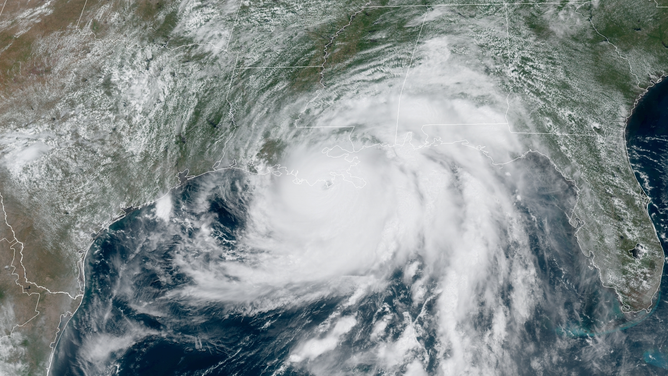Meteorologists weary of ‘Brown Ocean’ influence on tropical systems
Researchers have found that swampy areas or even areas whose soils have recently received a substantial amount of rainfall can have enough warm, shallow water to mimic the ocean waters, and allowing storms to maintain their power.

Visible satellite imagery captured Category 4 Hurricane Ida at peak intensity as it approached the coast of southeastern Louisiana on Sunday, Aug. 29, 2021.
(NOAA/NESDIS/STAR)
MIAMI – A tropical disturbance heading for southern Florida this weekend is sure to bring a lot of heavy rain, but luckily it’s not looking like it’ll strengthen into a hurricane.
But if a hurricane were to cross Central or South Florida, could it get an assist from the swamps?
Tropical systems get their fuel from warm ocean waters, and a vast majority of these storms begin to lose their power once they move inland and their warm water source is cut off.
HERE’S HOW TO PREPARE FOR HURRICANE SEASON NOW
Yet you may have heard about recent research that found some tropical storms and hurricanes were able to maintain their strength for hours after making landfall, bucking the expectation of weakening after landfall.
How? By garnering power from saturated soils.
7 FACTS TO KNOW ABOUT HURRICANES
Known as the "brown ocean" or "brown water" effect, researchers have found that swampy areas such as the Florida Everglades or the Louisiana Bayous -- or even areas whose soils have recently received a substantial amount of rainfall – can have enough warm, shallow water to mimic the ocean waters, and allowing storms to maintain their power.

(FOX Weather)
HOW TO STAY SAFE AFTER A HURRICANE
Researchers found Hurricane Ida, which was able to maintain major hurricane strength for several hours after landfall in Louisiana, was one such instance. Another was Hurricane Wilma, which struck the southwestern coast of Florida as a Category 3 hurricane in 2005, and was still nearly at full strength when it exited the Florida peninsula on the eastern side a few hours later.
HERE’S WHY THE ATLANTIC HURRICANE SEASON RUNS FROM JUNE TO NOVEMBER
"Residents in Miami were stunned at how strong the winds were and how well the hurricane held together," says FOX Weather Meteorologist Andrew Wulfeck.
2007's Tropical Storm Erin, which tracked through a soggy Texas and survived into Oklahoma, was another example.
WHAT DOES IT MEAN WHEN A HURRICANE UNDERGOES ‘RAPID INTENSIFICATION’?
But as for this weekend’s tropical disturbance heading into Florida’s marshlands, the ‘brown ocean’ effect shouldn’t be a major factor.
"The (Florida) Everglades can come into play with a small storm. It might stay a bit stronger a bit longer," says FOX Weather Hurricane Specialist Bryan Norcross. "But with hostile upper winds like are occurring and are expected to continue, its effect will likely be minimal."
Stay updated on everything in the tropics this hurricane season. Download the FOX Weather app to get the latest forecasts, as well as any weather alerts that are issued.